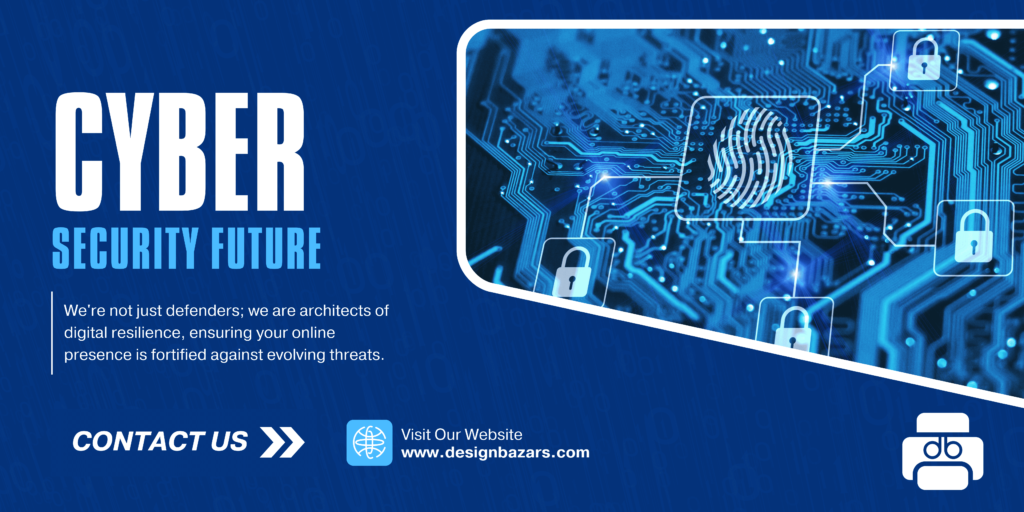In the modern digital age, cybersecurity has become one of the most crucial concerns for individuals, businesses, and governments. As technology evolves at an unprecedented pace, cyber threats are also becoming more sophisticated and challenging to combat. The future of cybersecurity will be shaped by the rise of artificial intelligence, quantum computing, the Internet of Things (IoT), and increasingly complex cyber-attacks. This article explores the potential advancements, challenges, and necessary measures to secure the digital world in the coming years.
The Rising Threat of Cyber Attacks
As we move forward, cyber threats will become more advanced and widespread. Hackers and cybercriminals are constantly finding new ways to exploit vulnerabilities in systems, networks, and software. The growing reliance on digital infrastructure means that even minor security breaches can have devastating consequences.
Some of the key cyber threats expected to dominate the future include:
Ransomware Attacks – Hackers encrypt data and demand payment for its release. These attacks are becoming more targeted and sophisticated.
Phishing and Social Engineering – Cybercriminals use deceptive tactics to trick individuals into sharing sensitive information.

AI-Powered Attacks – Attackers are leveraging AI to automate cyber-attacks, making them more effective and difficult to detect.
Supply Chain Attacks – Malicious actors infiltrate software and hardware suppliers to compromise an entire network.
State-Sponsored Cyber Warfare – Governments are investing in cyber capabilities to disrupt enemy nations, targeting critical infrastructure and national security.
Zero-Day Exploits – Hackers exploit software vulnerabilities before developers can patch them, leaving systems exposed to attacks.
With the increasing interconnectivity of devices, organizations must adopt robust cybersecurity measures to counteract these emerging threats.
Artificial Intelligence and Machine Learning in Cybersecurity
Artificial Intelligence (AI) and Machine Learning (ML) are set to revolutionize the future of cybersecurity. These technologies will enhance threat detection, automate responses, and predict potential security breaches. AI-driven cybersecurity tools can analyze vast amounts of data in real-time, identifying patterns that indicate cyber threats.
Key benefits of AI in cybersecurity include:
Automated Threat Detection – AI can identify unusual behavior in networks and take proactive measures before an attack occurs.
Adaptive Security Measures – ML algorithms continuously learn and adapt to new cyber threats, improving defense mechanisms.
Reduced False Positives – AI helps differentiate between legitimate activities and potential threats, reducing unnecessary alerts.
Faster Incident Response – Automated response systems powered by AI can isolate infected systems, preventing the spread of malware.
However, AI can also be used maliciously. Hackers are developing AI-powered attack tools, making cyber-attacks more efficient and harder to detect. Therefore, organizations must stay ahead by implementing AI-driven security solutions.
The Impact of Quantum Computing on Cybersecurity
Quantum computing is poised to transform cybersecurity. While quantum computers have the potential to solve complex problems much faster than classical computers, they also pose a significant threat to current encryption methods. Most cybersecurity protocols rely on encryption algorithms such as RSA and AES, which could become obsolete once quantum computers achieve widespread adoption.
To counteract this threat, researchers are working on post-quantum cryptography – new encryption methods that can withstand quantum attacks. Governments and tech companies are investing in developing quantum-resistant encryption to secure data in the post-quantum era.
Organizations must start preparing for the quantum age by:
Adopting Quantum-Resistant Encryption Algorithms
Conducting Risk Assessments for Quantum Threats
Investing in Quantum-Safe Security Solutions
Educating Security Teams on Quantum Computing Implications
Securing the Internet of Things (IoT)
The expansion of IoT devices presents a major cybersecurity challenge. From smart homes to industrial IoT applications, the increasing number of connected devices creates multiple entry points for cybercriminals. Many IoT devices lack strong security protocols, making them vulnerable to hacking attempts.
Future cybersecurity measures for IoT should focus on:
Implementing Strong Authentication Mechanisms – Ensuring only authorized users can access devices.
Regular Firmware Updates – Keeping IoT devices up-to-date to patch vulnerabilities.
Network Segmentation – Isolating IoT devices from critical systems to prevent large-scale breaches.
Device Encryption – Protecting data transmitted between IoT devices and networks.
Governments may also introduce regulations to enforce security standards for IoT manufacturers, reducing the risks associated with insecure devices.
The Role of Blockchain in Cybersecurity
Blockchain technology offers promising solutions for cybersecurity by providing decentralized and tamper-proof security measures. Some potential applications include:
Secure Identity Management – Blockchain can enhance digital identity verification, reducing identity theft and fraud.
Data Integrity – Immutable ledgers prevent unauthorized modifications to sensitive data.
Decentralized Security – Eliminating single points of failure by distributing security infrastructure across a blockchain network.
Smart Contracts for Cybersecurity Enforcement – Automating security policies and responses using blockchain-based contracts.
While blockchain has the potential to strengthen cybersecurity, it also requires continuous innovation to address scalability and efficiency challenges.
Regulatory Frameworks and Cybersecurity Policies
With the rising threat of cybercrime, governments worldwide are implementing strict cybersecurity laws and regulations to protect individuals and businesses. The General Data Protection Regulation (GDPR) in Europe, Cybersecurity Maturity Model Certification (CMMC) in the U.S., and other international policies aim to enforce data protection standards.
Future cybersecurity policies may focus on:
Mandatory Cybersecurity Compliance for Businesses
Improved Data Privacy Regulations
Stronger Penalties for Cybercriminals
International Collaboration on Cybercrime Prevention
Organizations must stay updated with regulatory changes to ensure compliance and avoid legal consequences.
The Need for Cybersecurity Awareness and Training
Many cyber-attacks succeed due to weak passwords, phishing scams, and lack of employee awareness. Investing in cybersecurity training and education is crucial for organizations and individuals.
Future cybersecurity initiatives should include:
Regular Security Training Programs
Simulated Cyber-Attack Exercises
Encouraging Strong Password Policies
Raising Public Awareness on Cyber Threats
By promoting a cybersecurity-conscious culture, businesses can significantly reduce the risk of security breaches.
Conclusion
The future of cybersecurity career is both promising and challenging. As technology advances, so do cyber threats, requiring continuous innovation and vigilance. AI, quantum computing, blockchain, and IoT security solutions will shape the next generation of cybersecurity defenses. However, businesses, governments, and individuals must work together to implement robust security measures, regulatory policies, and cybersecurity awareness programs.
Staying ahead in cybersecurity requires a proactive approach, where technology, regulation, and human vigilance work together to create a safer digital world. The coming years will define how well we adapt to evolving cyber threats, ensuring a secure and resilient digital ecosystem for future generations.














